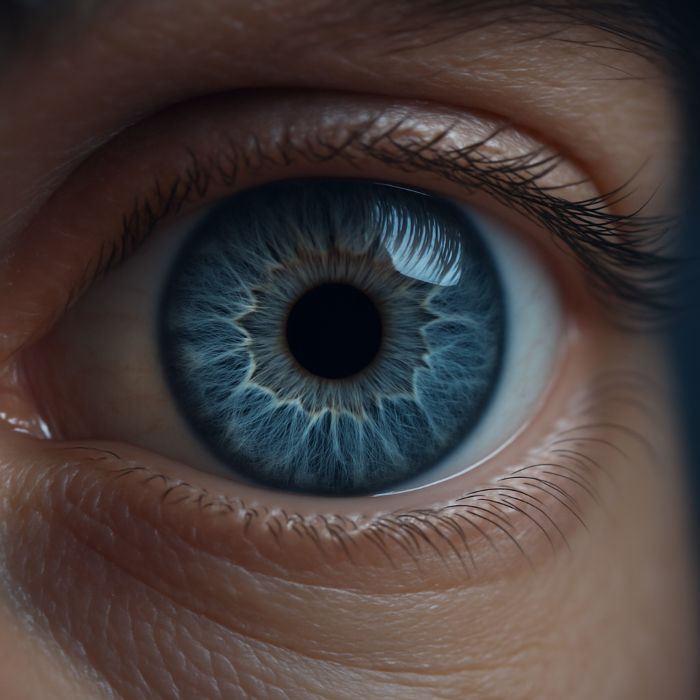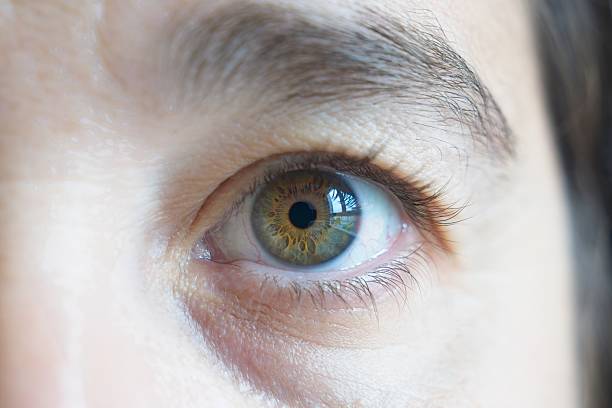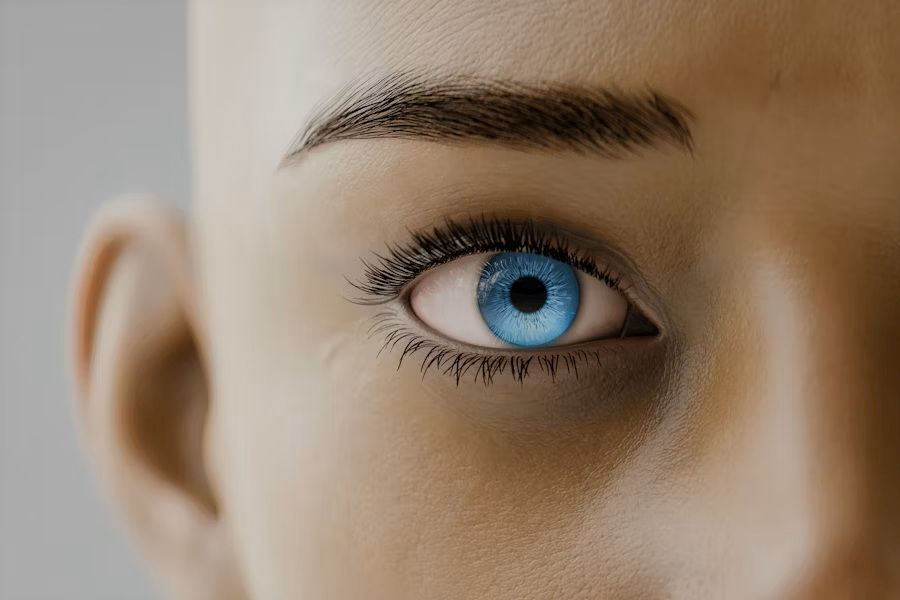Kärrysi on tyhjä
The Science Behind Iris Recognition & Why No Two Irises Are the Same

The human iris contains more unique information than any other biometric feature—even DNA can't match its distinctiveness. This remarkable organ isn't just responsible for regulating the amount of light entering your eye; it's also the foundation for one of the most accurate identification technologies available today. Let's explore the fascinating science that makes iris recognition possible and why your eyes truly are one-of-a-kind windows to your identity.
The Remarkable Structure of the Human Iris
The iris is the colored part of your eye surrounding the pupil, and its complexity is astonishing. Each iris contains approximately 266 distinctive characteristics, compared to just 40-60 points of comparison in fingerprints. These features include furrows, crypts, contraction furrows, rings, corona, freckles, and the zigzag collarette.
What makes the iris particularly special is its intricate pattern of connective tissue, fibers, rings, and pigmentation. This complex arrangement creates what scientists call a "living textural barcode" unique to each person. The iris begins forming during the third month of gestation and completes its development during the eighth month, after which its pattern remains stable throughout life except for color changes and occasional pathological conditions.
Even identical twins with the same DNA have completely different iris patterns. This makes iris recognition an exceptionally reliable method for identification, with error rates far lower than other biometric systems.
The Biology Behind Iris Uniqueness
What makes every iris unique comes down to a fascinating biological process. During embryonic development, a structure called the epithelial sheet forms on the anterior side of the iris. This sheet then deteriorates in a genetically determined pattern, but with a significant random component.
This process is called "chaotic morphogenesis" – a combination of genetic instruction and random development that creates the iris's final pattern. The randomness in this development process means that environmental factors have minimal influence on the final structure, making genetic determinism only a small factor in iris formation.
The distinguishing features that develop include:
-
Trabecular meshwork: The connective tissue that gives the iris its raised appearance
-
Crypts: Pit-like features that appear as dark spots
-
Furrows: The radial patterns that extend from the pupil outward
-
The collarette: The zigzag boundary between the pupillary zone and the ciliary zone
This complex combination of genetic and random factors ensures that no two irises are ever identical—not even in the same individual (your left and right irises differ significantly).
How Iris Recognition Technology Works
Modern iris recognition systems rely on sophisticated algorithms and imaging techniques to capture and analyze iris patterns. The process typically follows these steps:
1. Image acquisition: High-quality cameras with near-infrared illumination capture detailed images of the iris 2. Segmentation: Software identifies and isolates the iris from the surrounding eye elements 3. Normalization: The system compensates for variables like pupil dilation 4. Feature extraction: Algorithms identify and encode the distinctive patterns 5. Template generation: A digital "template" of the iris is created 6. Matching: The template is compared against a database for identification
The mathematical techniques behind this process are fascinating. Most systems use wavelet transforms to analyze texture patterns at various scales, creating a compact 512-byte IrisCode that represents the unique features of each iris.
The pioneering work of Dr. John Daugman in the 1990s developed the algorithms that made modern iris recognition possible. His mathematical approaches convert iris patterns into phase sequences through 2D Gabor wavelets. These algorithms are remarkably accurate, with false match rates as low as 1 in 1.2 million.
Advantages Over Other Biometric Systems
Iris recognition stands out among biometric identification methods for several compelling reasons:
-
Exceptional accuracy: Provides false match rates significantly lower than fingerprints, facial recognition, or voice recognition
-
Stability over time: Unlike faces or voices, iris patterns remain stable throughout adult life
-
Non-contact collection: Doesn't require physical contact with a scanner, improving hygiene and user comfort
-
Speed: Most systems complete identification in seconds
-
Difficult to forge: Creating fake irises that can fool modern systems is extremely challenging
This combination of attributes makes iris recognition particularly valuable for high-security applications. The error rates for iris recognition systems can be as low as 1 in 1.2 million, making them about 100,000 times more accurate than fingerprint systems for identification tasks.
The iris also offers another significant advantage: it's an internal organ visible from the outside but protected by the cornea. This makes it less susceptible to environmental damage than fingerprints, which can wear down over time or be damaged by certain occupations.
Real-World Applications
Iris recognition technology has found its way into numerous practical applications:
Border Control and Immigration: Many countries, including the UAE, Singapore, and the UK, use iris recognition at border checkpoints. The UAE's IRIS system has processed over a billion crossings and has prevented thousands of previously deported individuals from re-entering under false identities.
Law Enforcement: Police departments increasingly use iris scanning for secure identification of suspects and inmates, particularly useful when fingerprints are unavailable or compromised.
Humanitarian Services: The UNHCR uses iris recognition to ensure proper distribution of aid to refugees, preventing fraud and ensuring resources reach intended recipients. This technology has been particularly valuable in areas where proper documentation is scarce.
Banking and Finance: Financial institutions have begun implementing iris authentication for high-security transactions and account access, offering a more secure alternative to PINs or passwords.
Healthcare: Medical facilities use iris recognition to securely access patient records and control access to restricted areas or controlled substances, maintaining both security and privacy.
The technology continues to expand into new areas as costs decrease and systems become more portable, driving wider adoption across industries.
Challenges and Limitations
Despite its impressive capabilities, iris recognition isn't without challenges:
Image quality requirements can be stringent. Poor lighting, reflections, or excessive movement can interfere with proper recognition. Users must position themselves correctly, and some individuals with certain eye conditions may be unable to use the systems effectively.
Privacy concerns also surround iris recognition, as with any biometric technology. Since iris patterns cannot be changed if compromised, unlike passwords, proper data security is essential. Questions about consent, data storage, and potential tracking raise important ethical considerations for widespread deployment.
Technical challenges like liveness detection remain important areas of research. Systems must be able to distinguish between a real iris and a high-quality photograph or artificial eye to prevent spoofing attacks.
Despite these challenges, ongoing research continues to improve the technology's performance, usability, and security.
The Future of Iris Recognition
The field of iris recognition continues to evolve rapidly. Several exciting developments are shaping its future:
Miniaturization and integration into everyday devices means we may soon see iris recognition capabilities in standard smartphones, laptops, and wearable devices. Some flagship phones already include this technology, though wider adoption is still emerging.
Multimodal biometrics combines iris scanning with other recognition methods like facial recognition or fingerprints to create even more secure systems with lower error rates. This approach compensates for the weaknesses of any single method.
Artificial intelligence advancements are improving the accuracy and speed of iris recognition while reducing hardware requirements. Deep learning algorithms can now identify distinctive features more effectively than earlier systems.
Distance scanning capabilities are expanding, with some experimental systems capable of identifying individuals from several meters away or even while moving. This could revolutionize applications in security screening and public spaces.
As these technologies mature, we'll likely see iris recognition become increasingly commonplace in our daily lives, securing everything from our digital accounts to physical access points.
Conclusion
The science behind iris recognition leverages one of nature's most remarkable features—the uniqueness of every human iris. Through a combination of biological complexity and cutting-edge technology, we've developed identification systems of unprecedented accuracy and reliability.
As the technology continues to evolve, balancing security benefits with privacy considerations will remain crucial. The iris, with its intricate patterns formed through that fascinating dance of genetic guidance and random development, represents both the remarkable diversity of human biology and the ingenuity of human innovation.
The eyes truly are windows not just to the soul, but to our unique identities—identities that can now be recognized with remarkable precision by the technologies we've created.
Jätä kommentti
Kommentit hyväksytään ennen ilmestymistä.




